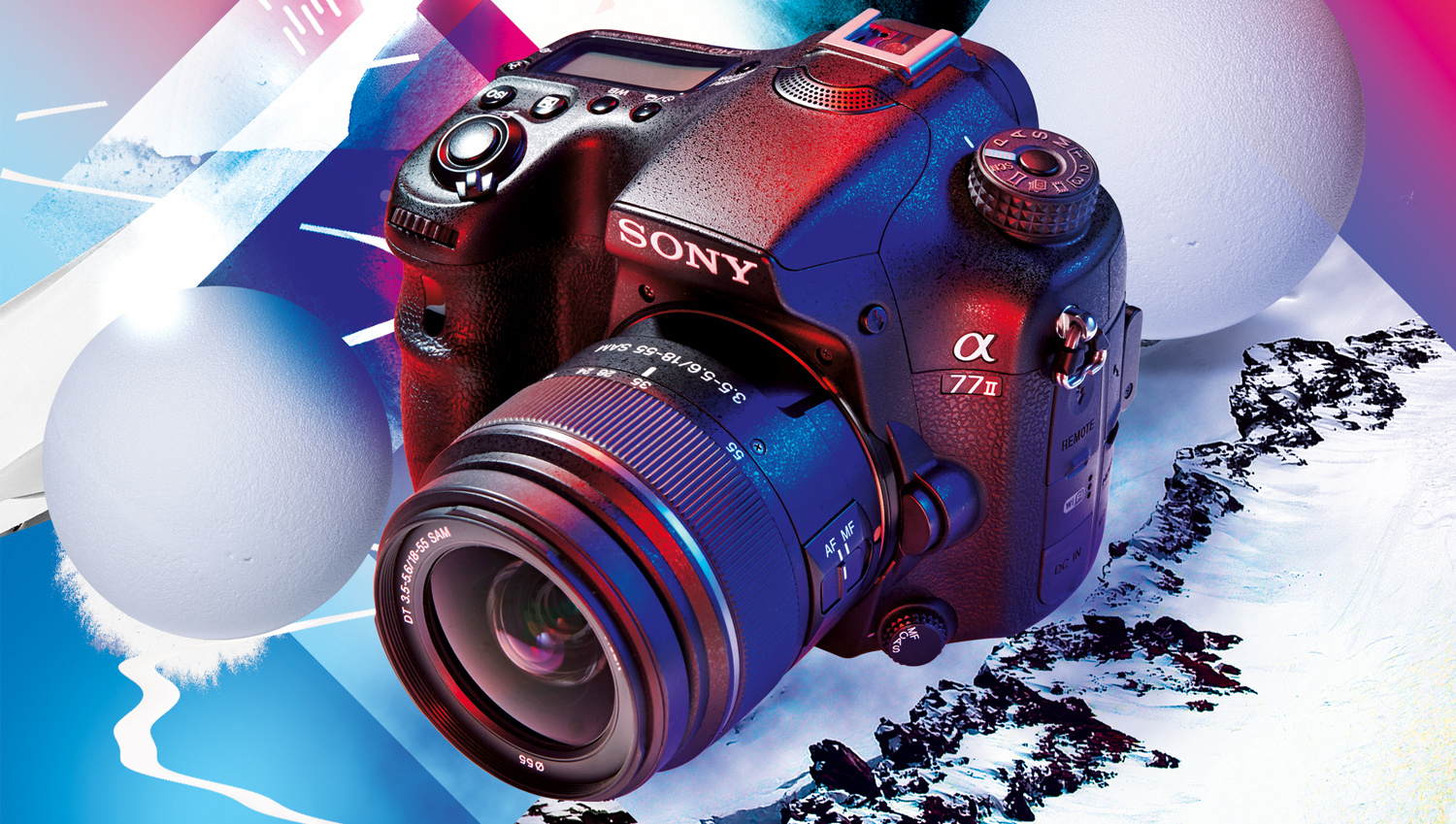
There's still the perception that to take professional-looking images you need a professional-looking camera. The digital SLRs (with one exception) rated here maintain that impression with chunky designs, deep grips and plentiful buttons and dials.
Most amateurs wouldn't use these DSLRs – they are busy snapping with their smartphones, while those who do want to step up from a handset are better catered for by a compact system camera.
So why choose a DSLR, except to pose as a pro? Well, unless you're going to splurge £20K on a medium format digital back, these beauties are the closest thing to achieving photographic perfection on the market today. This is chiefly due to their physically large APS-C or full frame sensors, plus bigger lenses providing greater resolving power than smaller alternatives. Yes, the camera may be relatively big, but so are the prints or enlargements achievable with it.
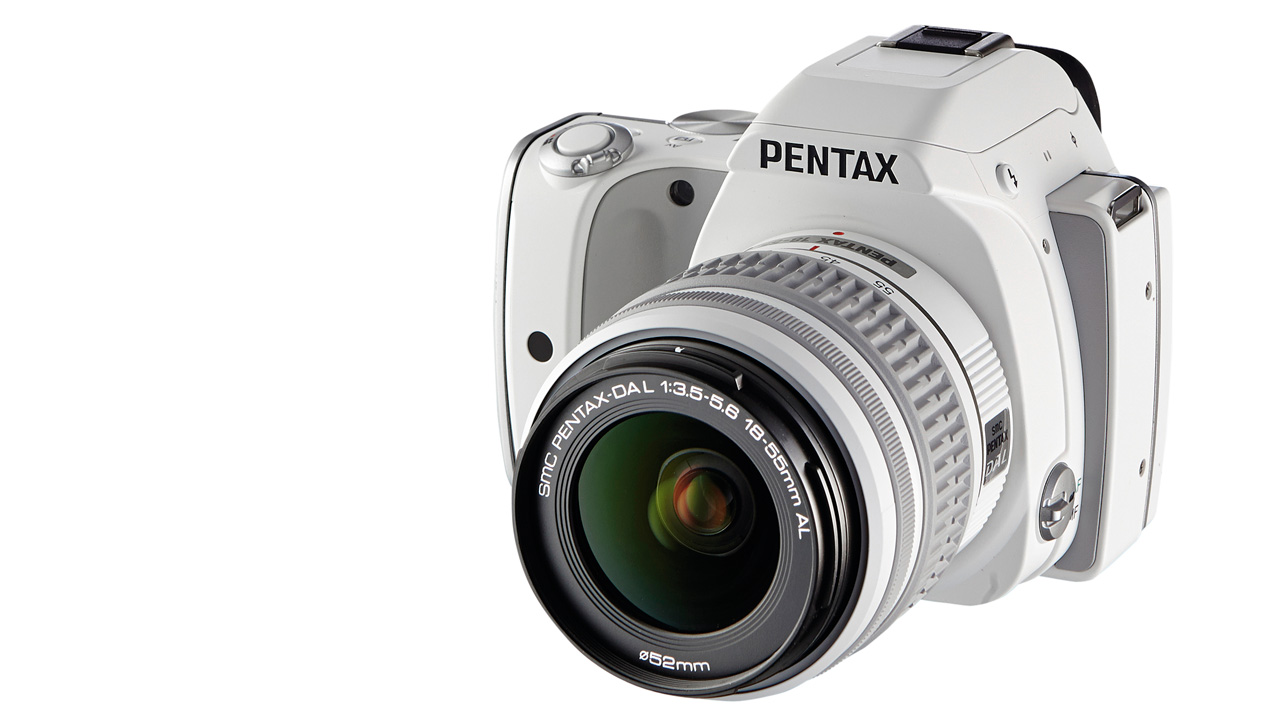
Pentax K-S1
Despite a rich history as an affordable and well-performing rival to the 'big two' of Canon and Nikon, the K-S1 steers away from direct competition and instead targets the smartphone user and younger photographer. Therefore, it has gone back to basics with extra-large controls for theoretically simpler handling and an unflashy design. Specification is still impressive however, as it fields a 20.12 (effective) megapixel APS-C CMOS sensor.
It comes bundled with a 18-55mm lens, roughly a 3x zoom, pop-up flash, plus fixed 3-inch LCD, not tilt 'n' swivel like an increasing amount of DSLRs. As an alternative for shot composition, the K-S1 offers a large and clear eye-level viewfinder – which, unusually for a cheaper model, offers a full 100 per cent field of view. Focus is swift, but the kit lens' AF mechanism is noisy and so for video it's a case of manually adjusting the focus ring. We'd have preferred the grip moulded to our hand shape for an even firmer hold, too.
While an LED-illuminated strip indicating whether photo or video mode selected is novel, we took a while getting used to a shooting mode dial on the backplate – offering the usual choice of manual, auto settings and in-camera effects – instead of being in its familiar location by the shutter release.
Build aside, there's a useful top shooting speed of 5.4 images per second and light sensitivity stretches to ISO51200, enabling both action shots and shooting in the dim without flash. Being a Pentax, there's also the advantage over Canon and Nikon in that anti-shake is built into the body to prevent image blur, rather than via a specialist lens.
Sign up to the T3 newsletter for smarter living straight to your inbox
Get all the latest news, reviews, deals and buying guides on gorgeous tech, home and active products from the T3 experts
Though the ability to connect with a smartphone is provided via an optional 16GB 'Flucard' memory card, there's no built-in Wi-Fi functionality. If you ignore the fact that handling could be more fluid, the K-S1 produces detailed and colourful images.
Love Large and clear viewfinder. Simplicity of use. Sharp and colour-rich pictures
Hate Controls stiffer and less intuitive than we'd like. LCD screen is fixed. Handgrip narrow and slippery
T3 Says A tad clunky and design is uninspired, yet the picture quality proves this is still a Pentax
3/5
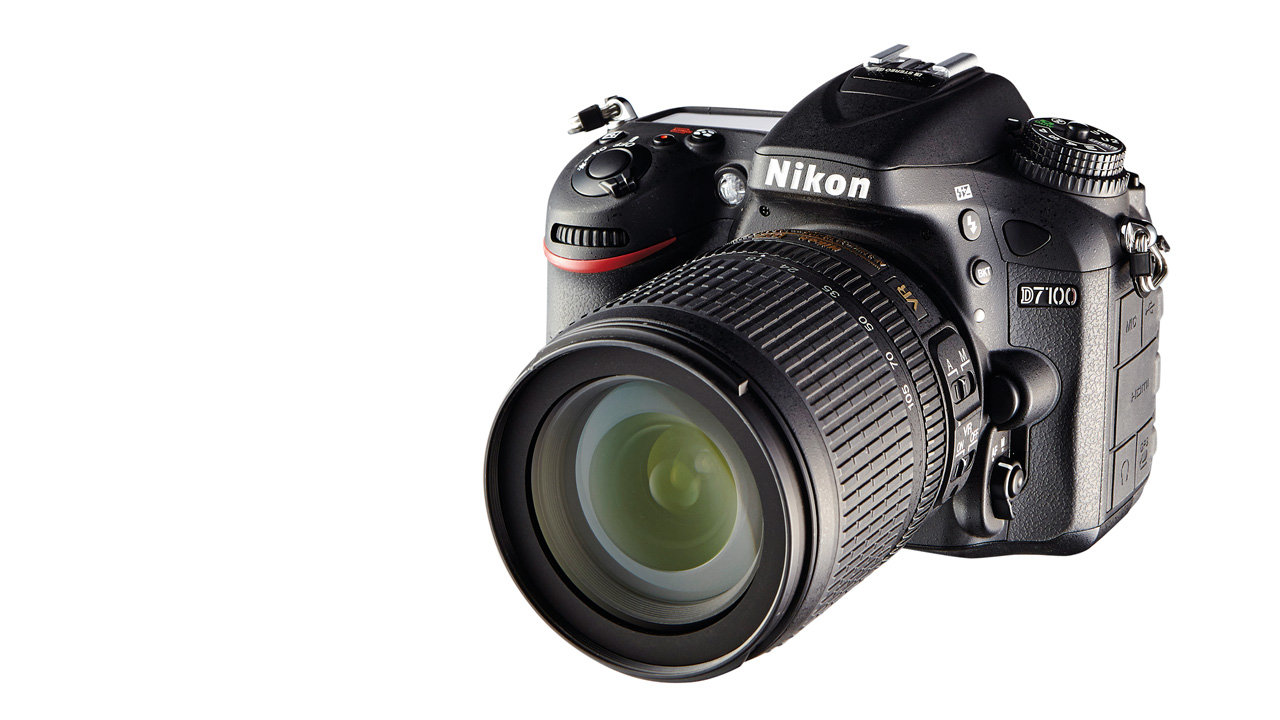
Nikon D7100
The veteran contender, the D7100 is all about image quality. It was one of the first to kick-start the trend of omitting an optical low-pass filter in order to eke out a teeny bit more detail. The camera's high-resolution 24.1-megapixel APS-C CMOS sensor and 51 user selectable AF points still hold their own, though by present standards a 6fps maximum capture speed plus core light sensitivity range of ISO100- 6400 reads as modest. Images are composed using the eye-level optical viewfinder – or there is the option of placing the non-tilting 3.2-inch LCD screen in Live View mode too.
Held in your hand, complete with the 18-105mm kit zoom, the D7100 feels worth its £750, thanks to its weather-durable magnesium alloy build, nicely rounded and firm hand grip, plus secondary top plate LCD for accessing the most commonly used shooting settings. Otherwise, this semi-pro Nikon's controls are pretty much the mix we'd expect to find on any digital SLR. So we get the standard chunky shooting mode dial with its division of manual and fully auto settings. There is no video recording option on this dial for its Full HD clips, but a dedicated – though unmarked – red record button sits next to the shutter release for
the purpose.
Shooting video is a three-step process: the Live View button first has to be pressed to enable the rear screen to be used as your viewfinder, whereupon the mirror mechanism flips out of the way and recording commences with a further button press.
Despite the noises being made for picture quality above all else when the Nikon was first released, to our eyes they appear on a par with what we'd expect to see from any £500 APS-C sensor DSLR. So if you don't need the weather-proofed body, there is the potential to save a bit of cash. Having said that, the D7100 is now half the price it was on launch, so great value.
Love Weather-resistant construction. Long (950 shots) battery life. 51 AF points aid focus accuracy
Hate No built-in Wi-Fi/tilting screen. Not a big jump in detail from a mid-range £500 DSLR
T3 says This weather-resistant DSLR performs well but omits newer features like NFC and Wi-Fi
4/5
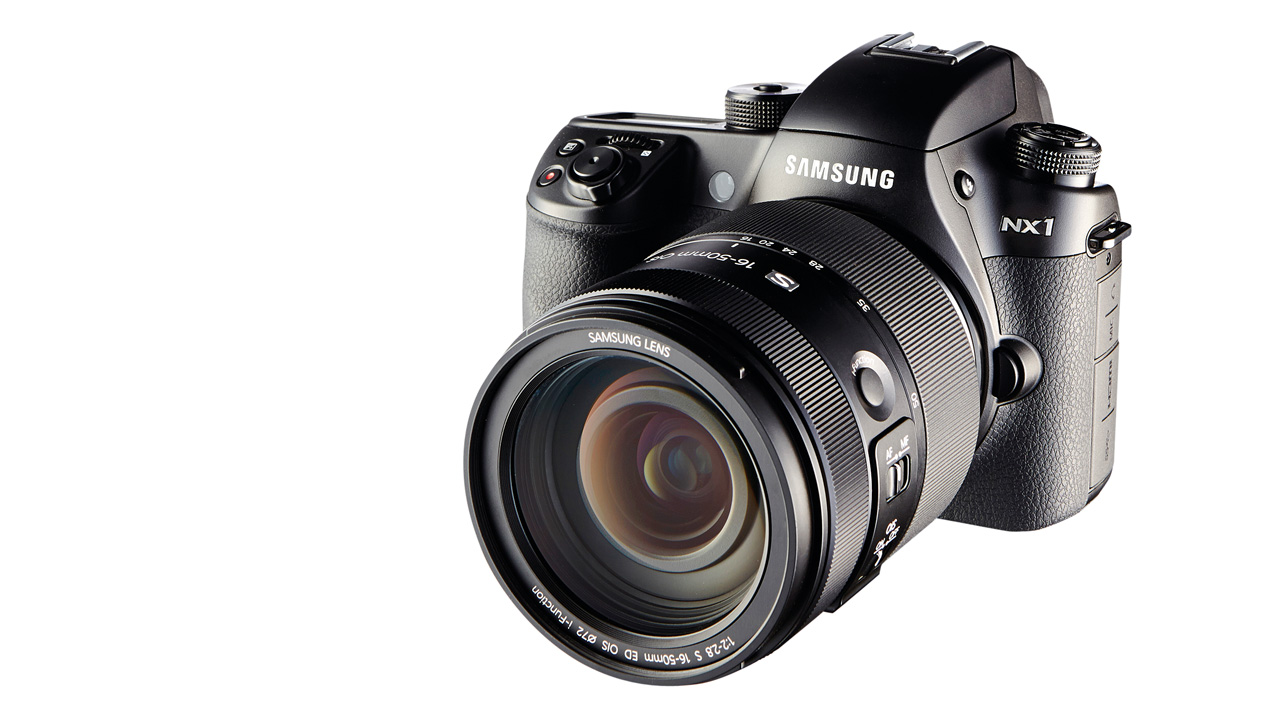
Samsung NX1
It looks like any DSLR and features a 28-megapixel resolution APS-C sensor. Yet the NX1 isn't technically a DSLR, as it omits a mirror mechanism in order to shorten the distance between lens mount and sensor, thus in theory enabling a more compact build. Yet it's a bit of a beast and certainly DSLR-like in its handling, via a chunky shooting mode wheel plus a second smaller dial offering access to drive modes. On top of that, the Samsung is one of the very few interchangeable lens cameras to capture 4K videos, and the step up is such that a sharp photo can be extracted from a movie frame.
Notwithstanding the lure of 4K capture and a best-in-class 15fps photo capture, the NX1 is as expensive as a semi-pro Canon or Nikon. Both better-established brands offer 70+ compatible lenses each, whereas there are currently around 16 for the NX1. That said, Samsung's line-up includes broad focal ranges such as the 50-150mm telephoto zoom we had to play with, plus a 16-50mm comes bundled with the camera to get started. It also betters most DSLRs for swift and accurate autofocus, twinning a massive 205 phase-detection AF points with 209 contrast AF points.
The Samsung's chunkiness ensures it feels reassuringly solid in the palm. Photos or videos are composed and reviewed via the eye-level electronic viewfinder or 3-inch AMOLED screen below, which can be angled up or down to further aid visibility.
If it's well-saturated colours you're after, in its default settings the Samsung really delivers, giving skin a healthy glow and causing red, blues and greens to really 'pop' for both video and stills. The built-in optical image stabiliser also avoids any nasty instances of blur resulting from camera shake due to slower shutter speeds. Our only question is whether photographers will spend big on a brand known for its budget models.
Love Tilting screen and eye-level viewfinder. Light yet sturdy body. Lightning fast and accurate response
Hate Price. Not the most compact alternative to a DSLR. Fewer compatible lenses available
T3 Says Samsung encases a large chip, high-resolution and 4K capture in a DSLR-styled body
4/5
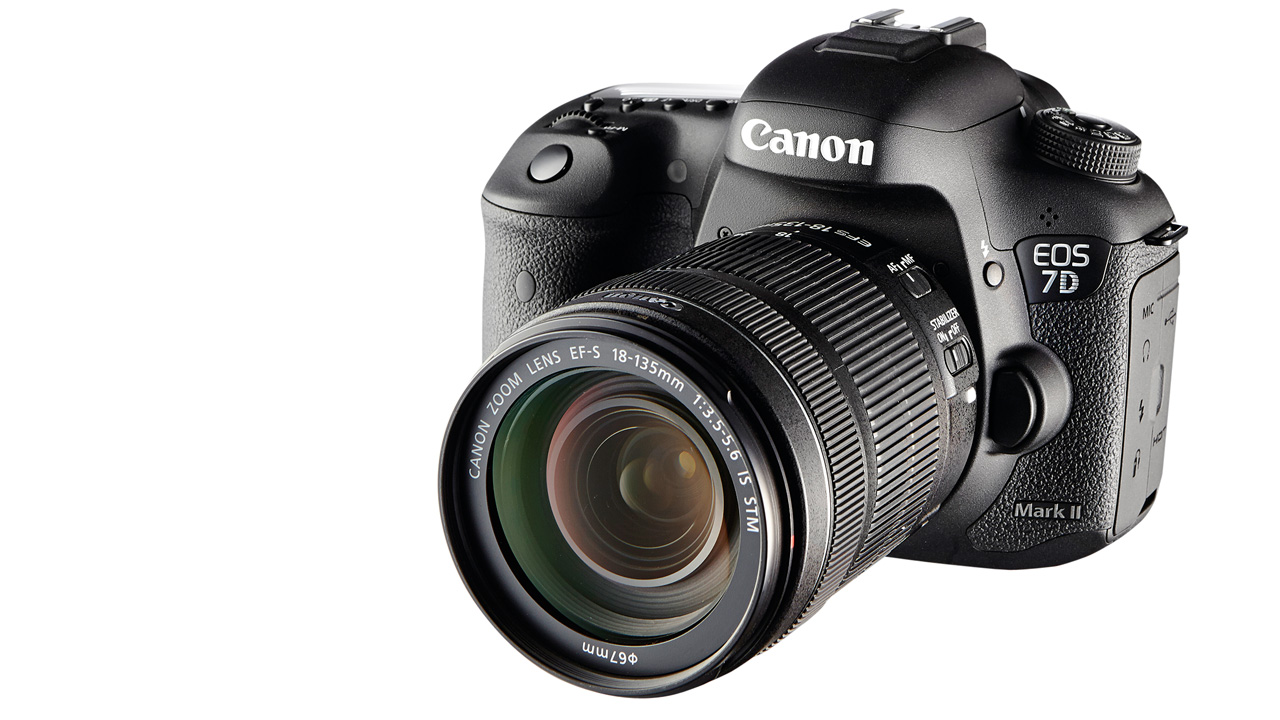
Canon EOS 7D Mark II
The second-generation 20.2 (effective) megapixel 7D Mark II shows its semi-professional status not only in its highest-on-test price, rapid response times and list of features as long as your arm, but also in its weather-sealed construction. Like Sony's A77 Mark II, Canon's 7D II defaults to the increasingly popular 3:2 image aspect ratio, though adds the options of swapping back to the regular 4:3, 16:9 or even 1:1 medium format ratio at any time.
Utilising 65-point AF to provide pin-sharp focus no matter where your subject wanders in the frame, the Canon can use more than 70 compatible lenses and, as its maker assumes you might already have a collection, it comes as a body-only option. We were sent the 18-135mm zoom, which is as good as any to start with given its focal range is the equivalent of 28-216mm in 35mm terms – thanks to the Canon's 1.6x magnification factor.
The camera body is marginally bigger than the Sony A77 Mark II, but otherwise the cameras have a very similar layout and feel. Handling and access to key features is familiar, though we found the joystick used to scroll through menu settings on the rear a little small and a tad slippery in use. As with the Sony and Nikon, however, we love the fact that the Canon has a top-plate LCD window – as well as its larger fixed screen at the back – for displaying key settings at a glance, along with dedicated small buttons around this screen for altering choices with a spin of an adjacent control wheel. The traditional optical viewfinder is big and bright enough for eye-level shot composition… even indoors.
There's the advantage of Full HD video capability too, and, though Live View has to be turned on before recording can commence, that's true of all traditional SLRs. If you don't need a full-frame DSLR, the 7D is still the top Canon choice.
Love Lightning-fast response times. Sturdy and weather-proofed. Lens and accessory availability
Hate Small and slippery joystick could be enlarged/improved. Priciest DSLR in the line-up
T3 Says The pinnacle of what's available from an APS-C chipped digital SLR
4/5
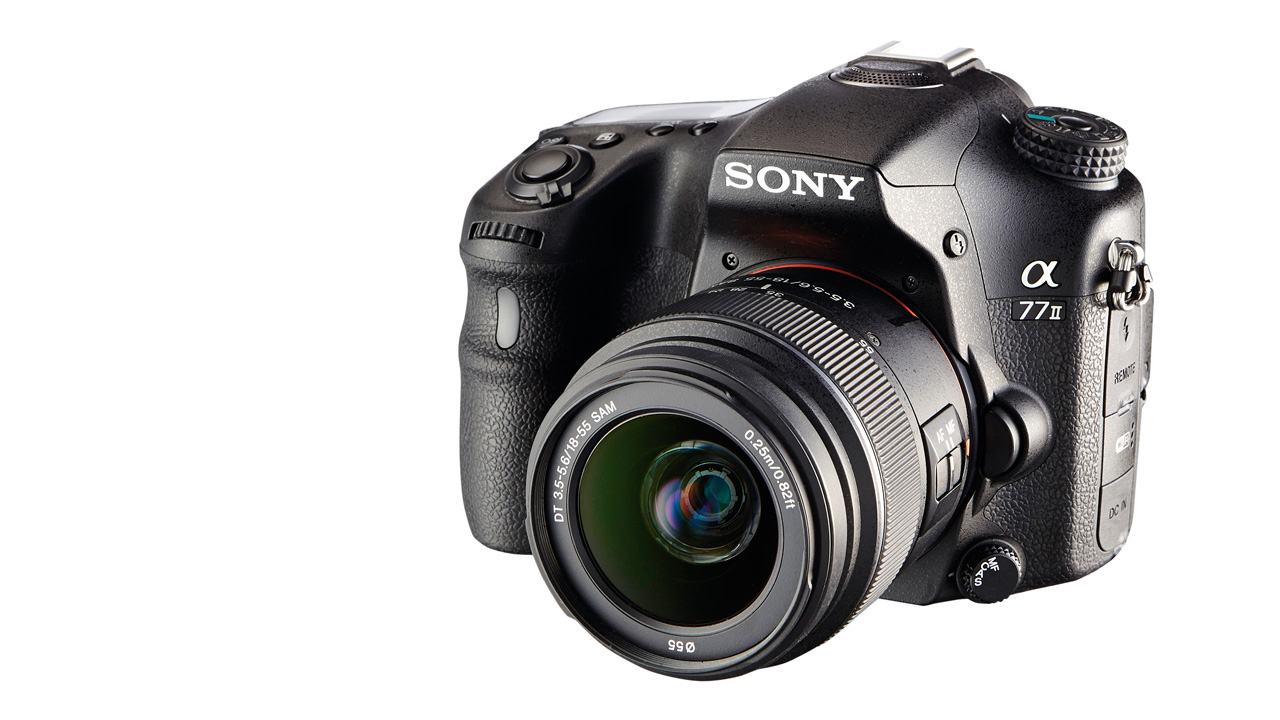
Sony A77 II
Instead of omitting a traditional SLR's internal mirror mechanism, Sony has made it translucent. The benefits include faster autofocus – the 24.3-megapixel A77 Mark II offers 79-point AF for accuracy – plus faster response times when it comes to activating the camera's video features. On a regular DSLR the mirror has to flip out of the way before video recording can commence, which means there's a second or two wait. Here, Full HD video capture at up to 50fps is a nearly instant process.
We tested the Sony with its 18-55mm kit zoom (around £1,099 all in), with images captured in a slightly elongated 3:2 image ratio as a default – the alternative being a widescreen 16:9, rather than the digital camera standard 4:3. As with the NX1, the viewfinder on the Sony is electronic rather than optical. Here it's an OLED screen offering 100 per cent field of view – so what you see is what you get – and, thanks to a whopping resolution of 2.3 million dots for its half-inch size, we didn't find it inferior to an optical alternative.
As with its Samsung rival, continuous shooting speed is much faster than you'd expect with a DSLR usually found for £1,000 or just under – here it's a professional-grade 12fps. Also pro-like is the weather-resistant body with comfortably prominent handgrip and secondary top-plate LCD window displaying key settings.
The sense that Sony has thought of everything – except the 4K capture inevitably coming with a future generation – extends to the inclusion of Wi-Fi and NFC, and the fact that the 3-inch high-res backplate LCD can be angled and tilted for use as an alternative viewfinder. It has the features but it also has the image quality, with stills and videos rendered sharp, colourful and clear.
If you're able to stump up nearly a grand, the A77 II is a comprehensive all-rounder.
Love Solid-feel weather-proofed body. Large high-resolution sensor. Three viewing screens
Hate Plentiful buttons means steeper learning curve. We missed being able to shoot regular 4:3 ratio stills
T3 Says Feature-packed excellent performer for advanced amateurs who don't require 4K video
5/5
The final word
DSLRs are still a big deal
Smaller, lighter and easier to get to grips with, compact system cameras (CSCs) have been chomping at the heels of traditional SLRs for a while now, so the manufacturers' response has been to make digital SLRs smaller and lighter, while adding convenient features found on consumer cameras such as flip-out LCDs, touchscreens, Wi-Fi and NFC connectivity. The fact remains, though, that a camera with a large sensor – bigger sensors meaning better light-gathering properties, and thus more detailed images capable of being enlarged without breaking up – needs a comparably large body to house it. So the latest DSLRs can only shrink so much in size.
That said, professional photographers do still actually prefer larger cameras, not only for their bigger, more comfortable grips and general robustness of build that will withstand accidental knocks in the heat of the action, but because turning up to a paid-for shoot with a camera body that can otherwise fit in your jacket pocket somehow feels a little 'amateur hour'. So ultimately there is a still a market for the DSLR for anyone wanting to put image first – whether we're talking the perceived image of the photographer themselves, or the picture quality a bigger chip delivers.
- Looking for a great read on the latest gadgets and tech? T3 magazine has it all - click here to subscribe now.
T3.com is one of the UK's leading consumer lifestyle websites and T3 magazine is its print counterpart. You can follow us on Twitter, Facebook and Instagram.
We present products in helpful buying guides and carefully curated deals posts across style, living, auto, smart home, watches, travel, fitness and more. We're delighted that 38,000 people buy a copy of T3 magazine every month.
-
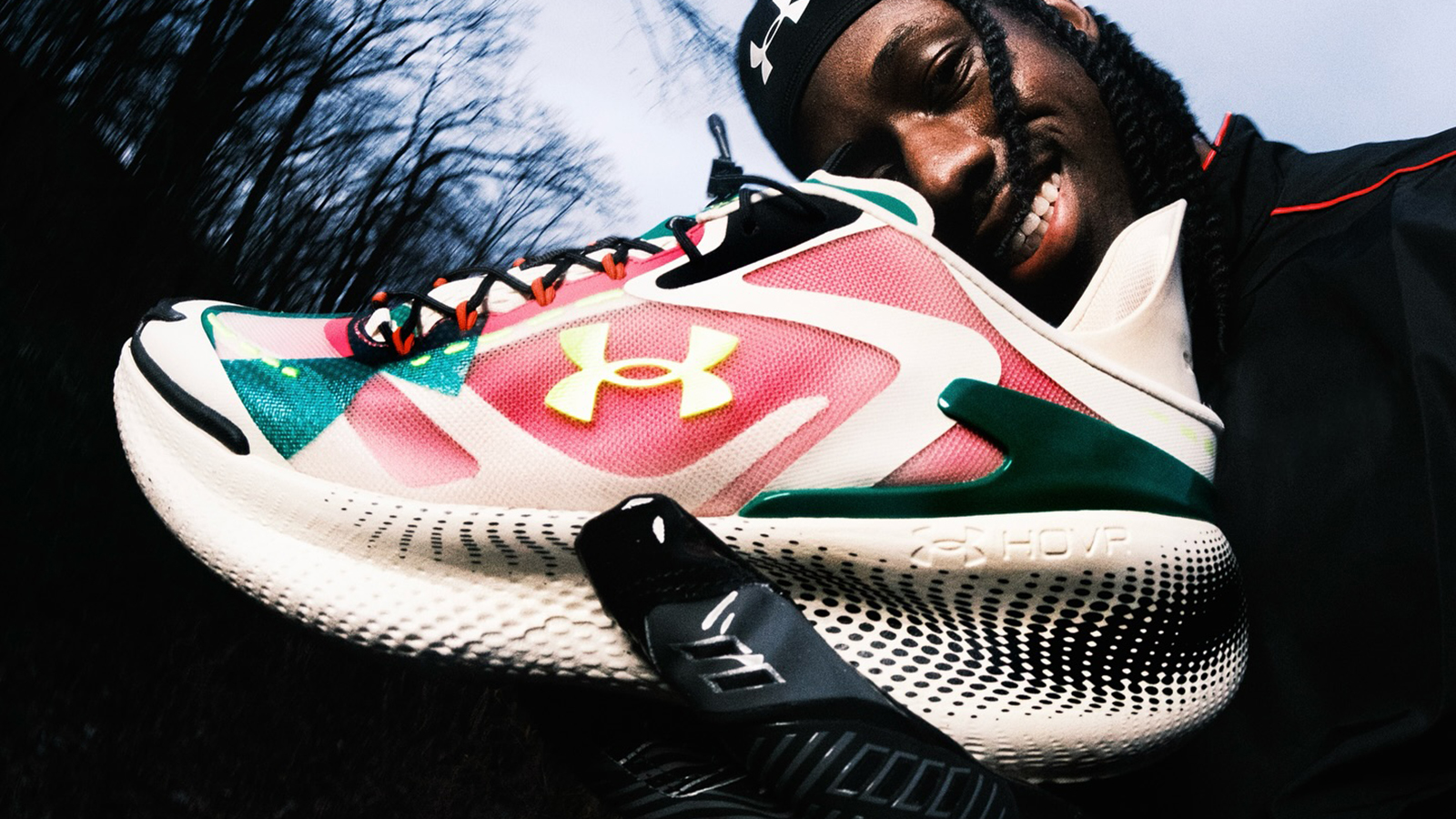 Under Armour's new sneaker doesn't play by the old rules
Under Armour's new sneaker doesn't play by the old rulesIf this is the future of the brand, it's off to a running start
By Matt Kollat
-
 Looking for a high-end record player? These 3 luxury turntables are the best
Looking for a high-end record player? These 3 luxury turntables are the bestIt’s Luxury Month on T3 – so here are the 3 top luxe record players you can buy
By Simon Lucas